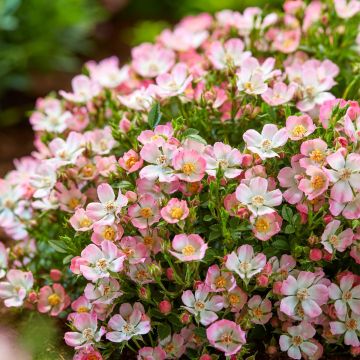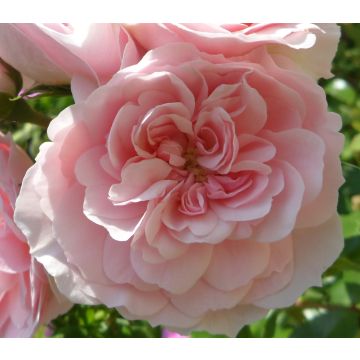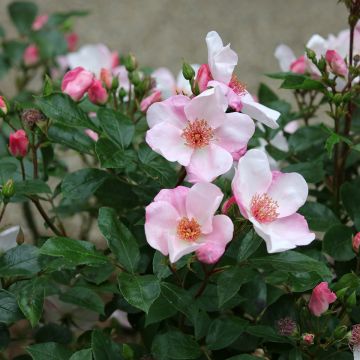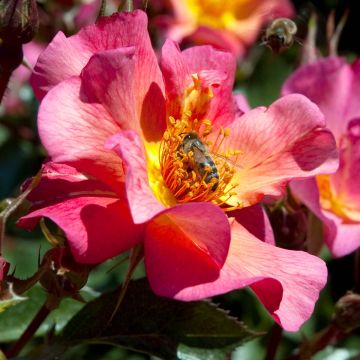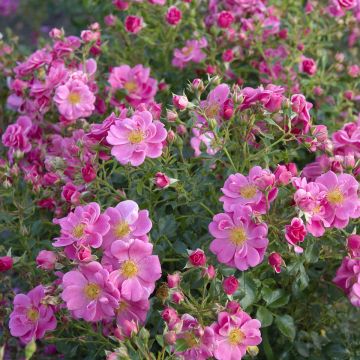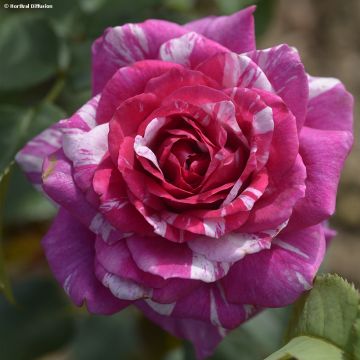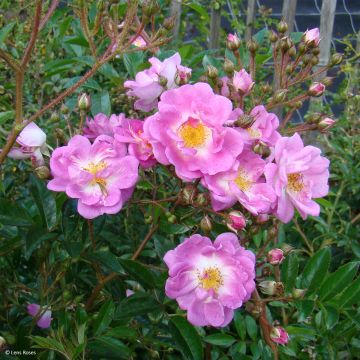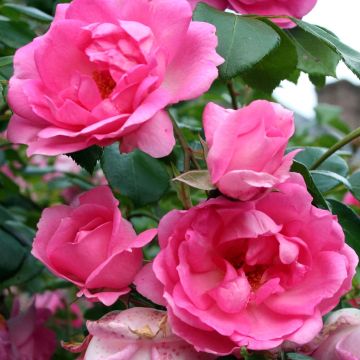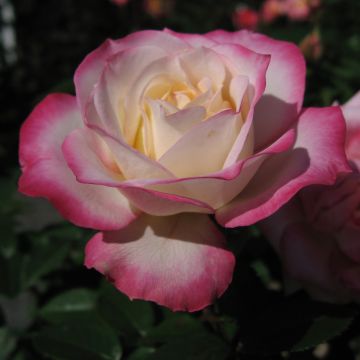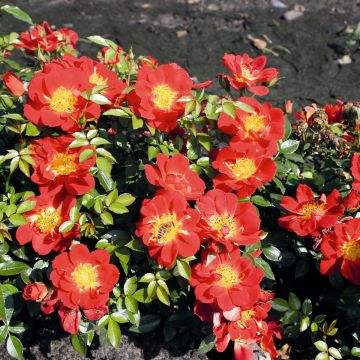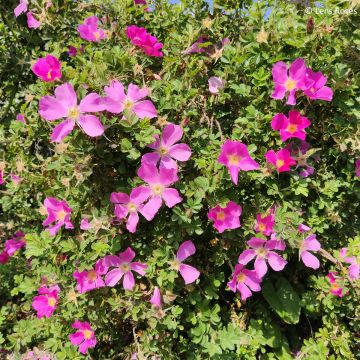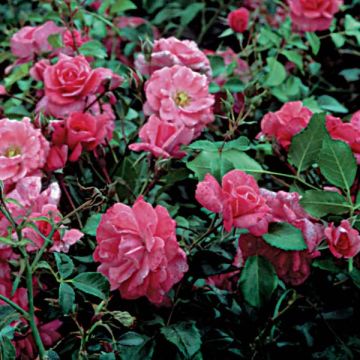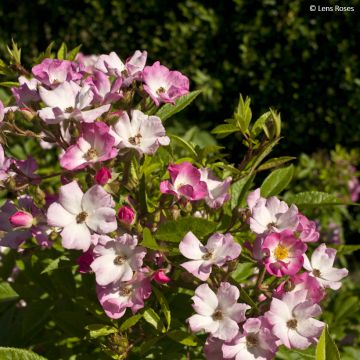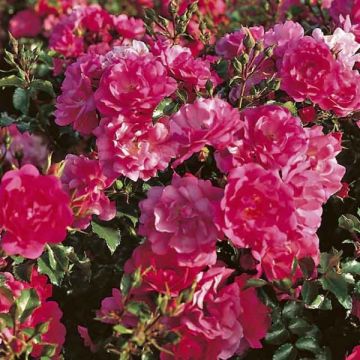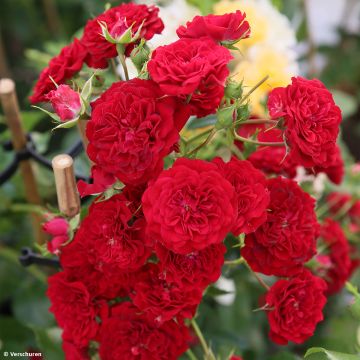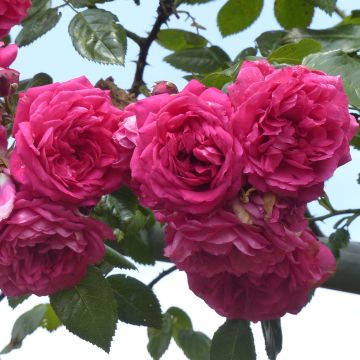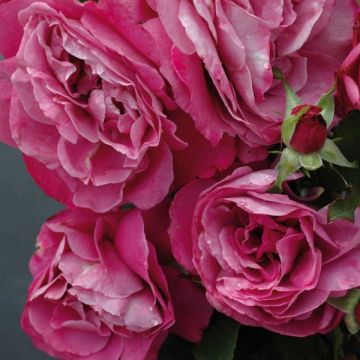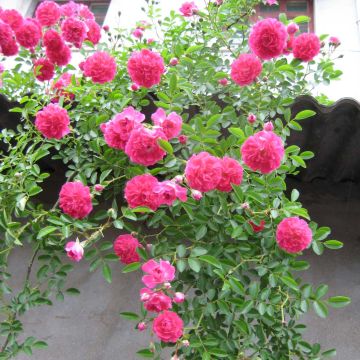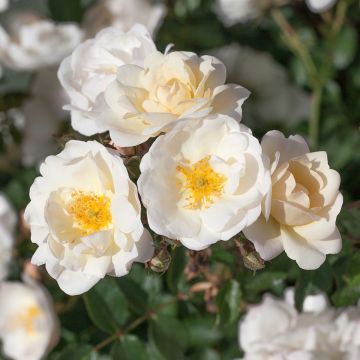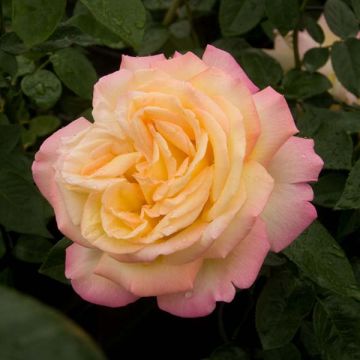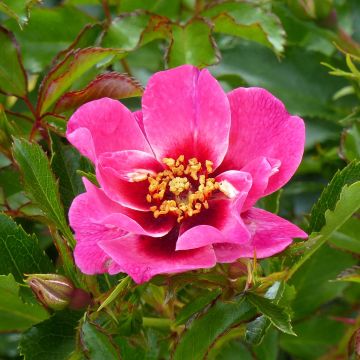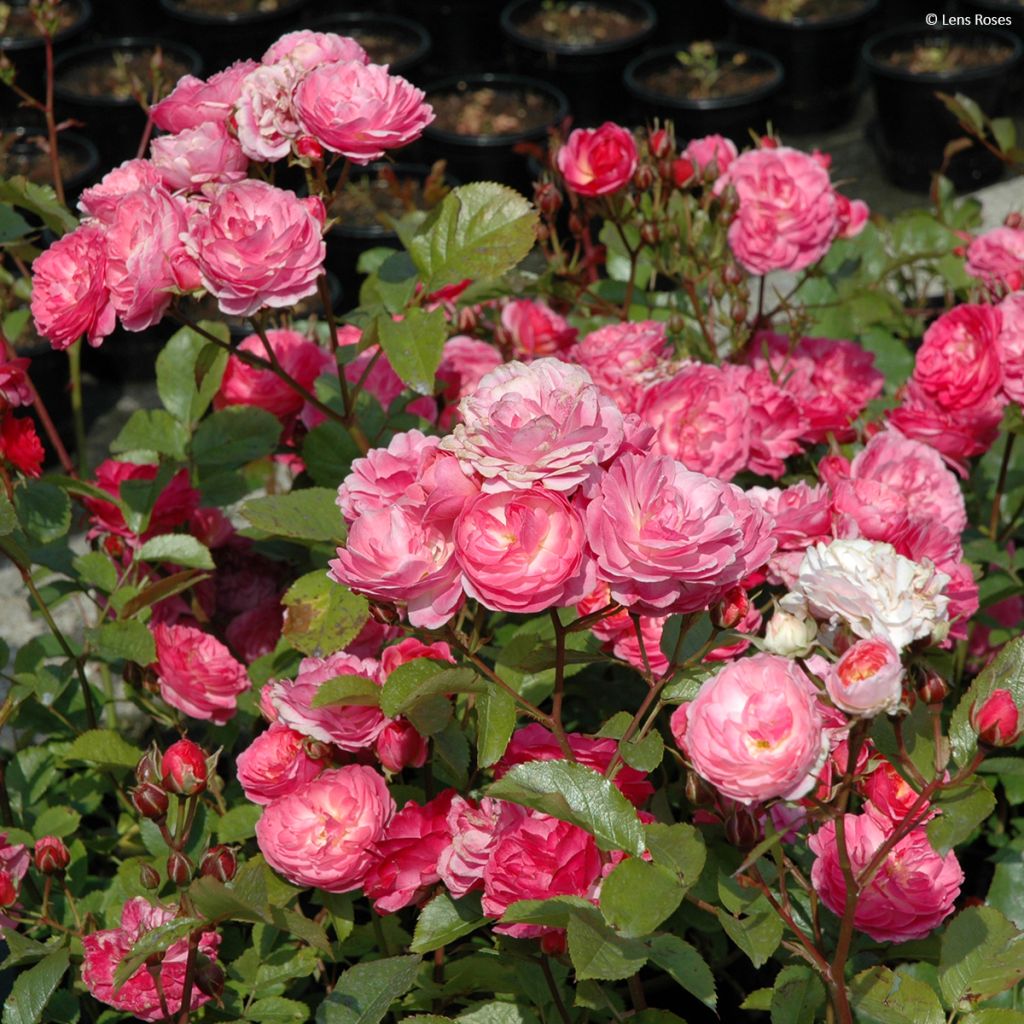

Rosa x moschata 'Walferdange'
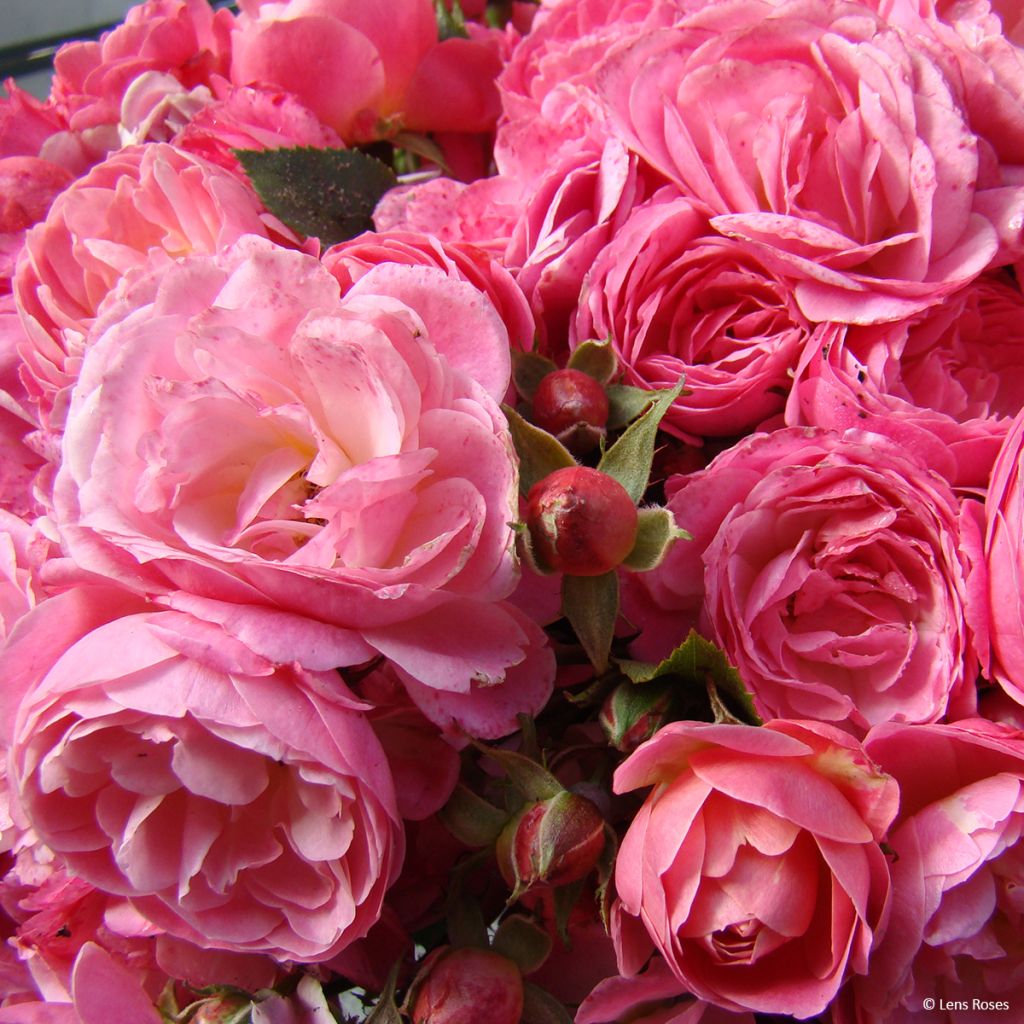

Rosa x moschata 'Walferdange'
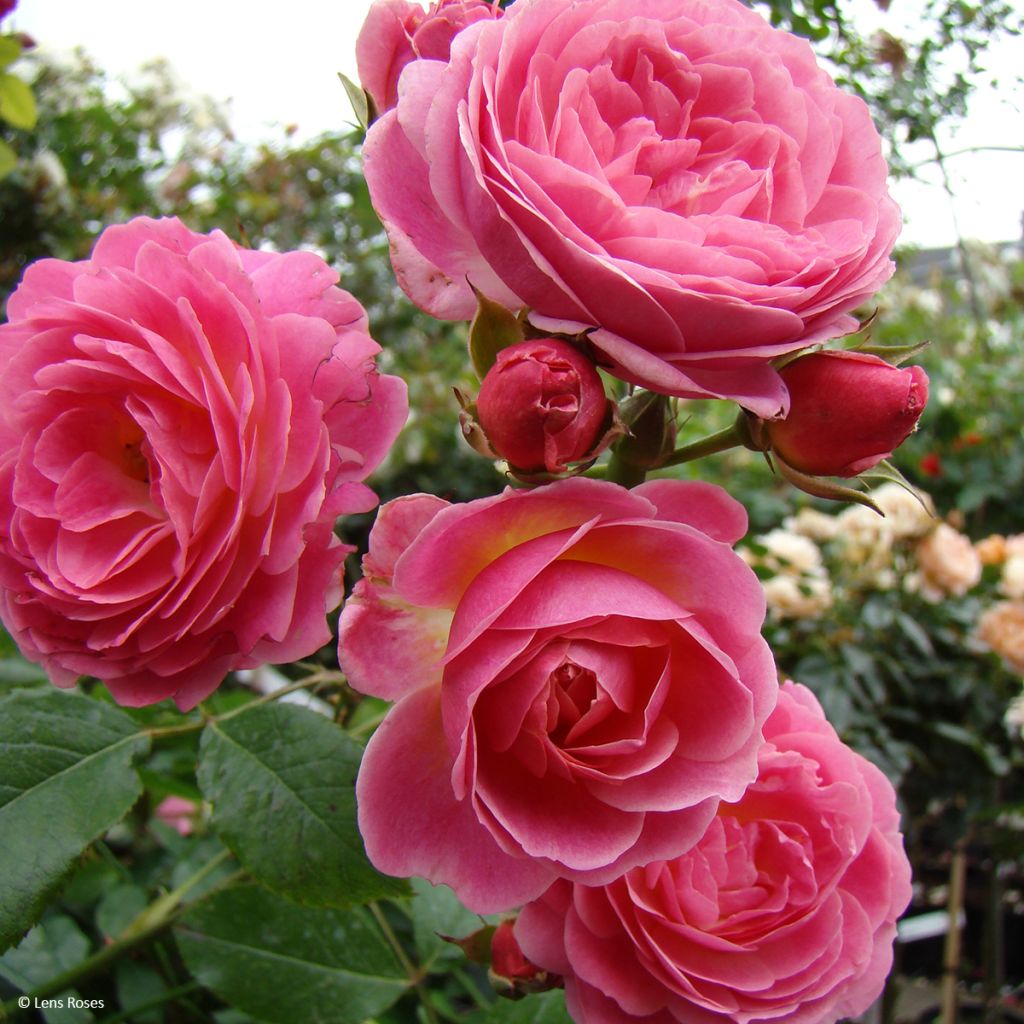

Rosa x moschata 'Walferdange'
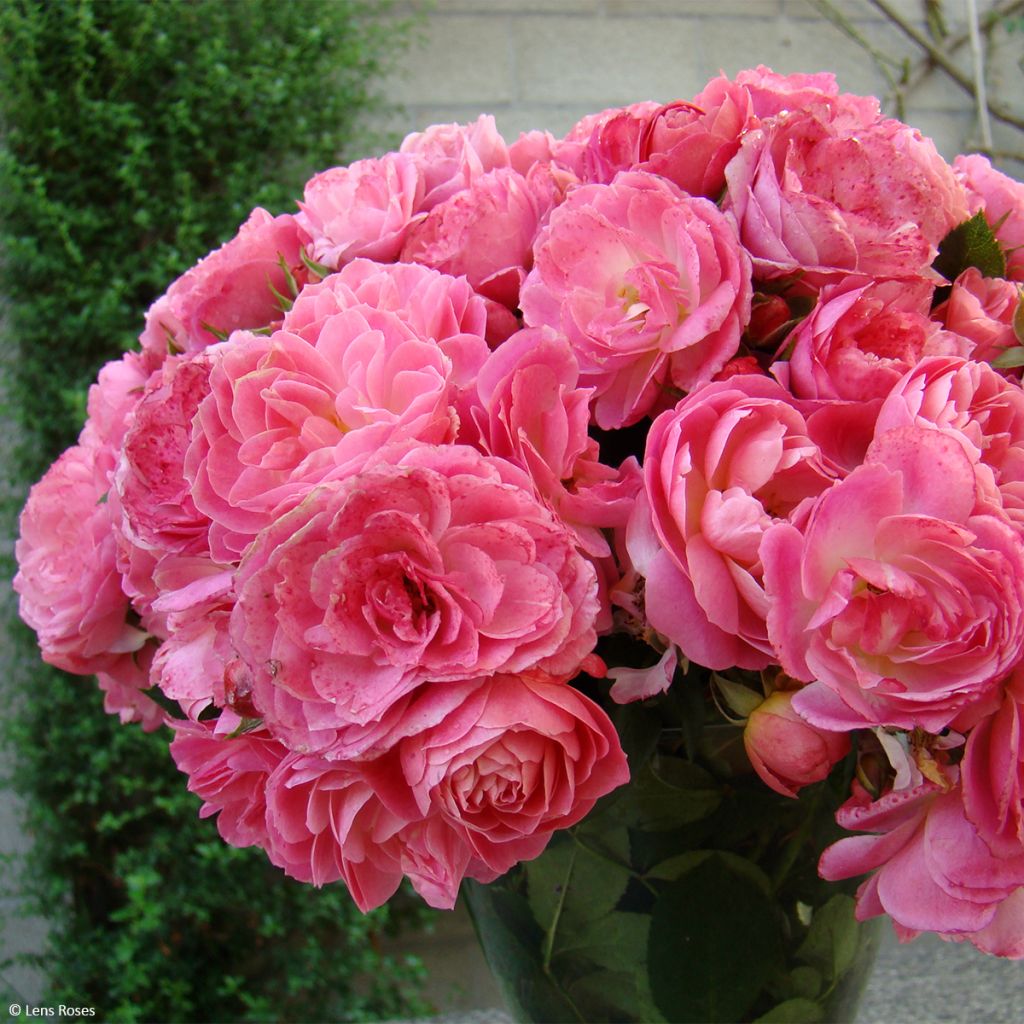

Rosa x moschata 'Walferdange'
Rosa x moschata 'Walferdange'
Rosa x moschata Walferdange® 'LENwal'
'LENwal'
Why not try an alternative variety in stock?
View all →This plant carries a 24 months recovery warranty
More information
We guarantee the quality of our plants for a full growing cycle, and will replace at our expense any plant that fails to recover under normal climatic and planting conditions.
From €5.90 for pickup delivery and €6.90 for home delivery
Express home delivery from €8.90.
From €5.90 for pickup delivery and €6.90 for home delivery
Express home delivery from €8.90.
Does this plant fit my garden?
Set up your Plantfit profile →
Description
The 'Walferdange' Rose is an adorable bush adorned with double and romantic flowers gathered in round and pink bouquets. They display a lovely range of colors, ranging from dark pink to true pink, with a pastel shade and a yellow blush at the base of the petals. With its recurrent blooming, it is also a versatile variety that can be used in the garden, in pots, and as cut flowers. A must-see!
The Walferdange Rose 'LENwal' is a creation by L. Lens dating back to 1990. This modern variety is derived, among others, from the musk rose Rosa moschata. In just a few years, this variety forms a tall bush with sturdy thorny stems, reaching an average height of 70 cm (28in) and a width of 50 cm (20in). It bears abundant foliage, cut into dark green, slightly glossy leaflets. This deciduous foliage falls in autumn. The flowering period lasts from June to October, with successive waves of blooms. The wide corollas measuring 5 cm (2in) are fully double, in the shape of cups. They are gathered in round bouquets. This rose's flowering is slightly fragrant. It is highly hardy, tolerating temperatures below -15 °C (5°F).
The floribunda roses can be used to create beautiful small hedges, planted mixed at the edge of the terrace or in small shrub beds. Combine them with ground cover roses, abelias, nandinas, or caryopteris for example. They are perfect companions for catmints, foxgloves, and tall baby's breath. The moderate growth, generosity, and charm of 'Walferdange' make it an interesting variety for all gardens, even small ones and for container gardening. Its uses are multiple, depending on each gardener's desires: in a rose bed, accompanied by white varieties ('Marie Pavie', 'Swanny'), pink or mauve ones ('Blue Boy', 'Rhapsody in Blue'). Like all roses, it looks stunning mixed with easy-to-grow perennials such as hardy geraniums or asters. Its roses are very pretty in small bouquets or as table centerpieces, paired with double clematis flowers for example.
Report an error about the product description
Plant habit
Flowering
Foliage
Botanical data
Rosa
x moschata
Walferdange® 'LENwal'
Rosaceae
'LENwal'
Cultivar or hybrid
Other Polyantha clustered Roses
Planting and care
From November to March, the 'Walferdange' rose should be planted in ordinary, well-loosened and drained soil. Roses prefer clayey soils, rather heavy than light. In soil that is too sandy, compact, or dry in summer, it is advisable to incorporate well-rotted manure or compost at the bottom of the planting hole. However, this rose dislikes waterlogged soils in winter. Place it in a sunny position or, at most, in partial shade. Roses are greedy plants, so a specific fertiliser will be beneficial at the start of vegetation and regularly during the flowering period. To encourage re-flowering, regularly remove faded flowers. Floribunda rose varieties are more vigorous and floriferous than large-flowered rose varieties. Therefore, the stems should be pruned back by about a quarter of their length (from 4 to 6 buds from the base of the stem) at the end of winter. Always prune above an outward-facing bud so that the bush can thicken and the branches do not become entangled in the centre of the branches.
Planting period
Intended location
Care
-
, onOrder confirmed
Reply from on Promesse de fleurs
Roses by purpose
Haven't found what you were looking for?
Hardiness is the lowest winter temperature a plant can endure without suffering serious damage or even dying. However, hardiness is affected by location (a sheltered area, such as a patio), protection (winter cover) and soil type (hardiness is improved by well-drained soil).

Photo Sharing Terms & Conditions
In order to encourage gardeners to interact and share their experiences, Promesse de fleurs offers various media enabling content to be uploaded onto its Site - in particular via the ‘Photo sharing’ module.
The User agrees to refrain from:
- Posting any content that is illegal, prejudicial, insulting, racist, inciteful to hatred, revisionist, contrary to public decency, that infringes on privacy or on the privacy rights of third parties, in particular the publicity rights of persons and goods, intellectual property rights, or the right to privacy.
- Submitting content on behalf of a third party;
- Impersonate the identity of a third party and/or publish any personal information about a third party;
In general, the User undertakes to refrain from any unethical behaviour.
All Content (in particular text, comments, files, images, photos, videos, creative works, etc.), which may be subject to property or intellectual property rights, image or other private rights, shall remain the property of the User, subject to the limited rights granted by the terms of the licence granted by Promesse de fleurs as stated below. Users are at liberty to publish or not to publish such Content on the Site, notably via the ‘Photo Sharing’ facility, and accept that this Content shall be made public and freely accessible, notably on the Internet.
Users further acknowledge, undertake to have ,and guarantee that they hold all necessary rights and permissions to publish such material on the Site, in particular with regard to the legislation in force pertaining to any privacy, property, intellectual property, image, or contractual rights, or rights of any other nature. By publishing such Content on the Site, Users acknowledge accepting full liability as publishers of the Content within the meaning of the law, and grant Promesse de fleurs, free of charge, an inclusive, worldwide licence for the said Content for the entire duration of its publication, including all reproduction, representation, up/downloading, displaying, performing, transmission, and storage rights.
Users also grant permission for their name to be linked to the Content and accept that this link may not always be made available.
By engaging in posting material, Users consent to their Content becoming automatically accessible on the Internet, in particular on other sites and/or blogs and/or web pages of the Promesse de fleurs site, including in particular social pages and the Promesse de fleurs catalogue.
Users may secure the removal of entrusted content free of charge by issuing a simple request via our contact form.
The flowering period indicated on our website applies to countries and regions located in USDA zone 8 (France, the United Kingdom, Ireland, the Netherlands, etc.)
It will vary according to where you live:
- In zones 9 to 10 (Italy, Spain, Greece, etc.), flowering will occur about 2 to 4 weeks earlier.
- In zones 6 to 7 (Germany, Poland, Slovenia, and lower mountainous regions), flowering will be delayed by 2 to 3 weeks.
- In zone 5 (Central Europe, Scandinavia), blooming will be delayed by 3 to 5 weeks.
In temperate climates, pruning of spring-flowering shrubs (forsythia, spireas, etc.) should be done just after flowering.
Pruning of summer-flowering shrubs (Indian Lilac, Perovskia, etc.) can be done in winter or spring.
In cold regions as well as with frost-sensitive plants, avoid pruning too early when severe frosts may still occur.
The planting period indicated on our website applies to countries and regions located in USDA zone 8 (France, United Kingdom, Ireland, Netherlands).
It will vary according to where you live:
- In Mediterranean zones (Marseille, Madrid, Milan, etc.), autumn and winter are the best planting periods.
- In continental zones (Strasbourg, Munich, Vienna, etc.), delay planting by 2 to 3 weeks in spring and bring it forward by 2 to 4 weeks in autumn.
- In mountainous regions (the Alps, Pyrenees, Carpathians, etc.), it is best to plant in late spring (May-June) or late summer (August-September).
The harvesting period indicated on our website applies to countries and regions in USDA zone 8 (France, England, Ireland, the Netherlands).
In colder areas (Scandinavia, Poland, Austria...) fruit and vegetable harvests are likely to be delayed by 3-4 weeks.
In warmer areas (Italy, Spain, Greece, etc.), harvesting will probably take place earlier, depending on weather conditions.
The sowing periods indicated on our website apply to countries and regions within USDA Zone 8 (France, UK, Ireland, Netherlands).
In colder areas (Scandinavia, Poland, Austria...), delay any outdoor sowing by 3-4 weeks, or sow under glass.
In warmer climes (Italy, Spain, Greece, etc.), bring outdoor sowing forward by a few weeks.

































